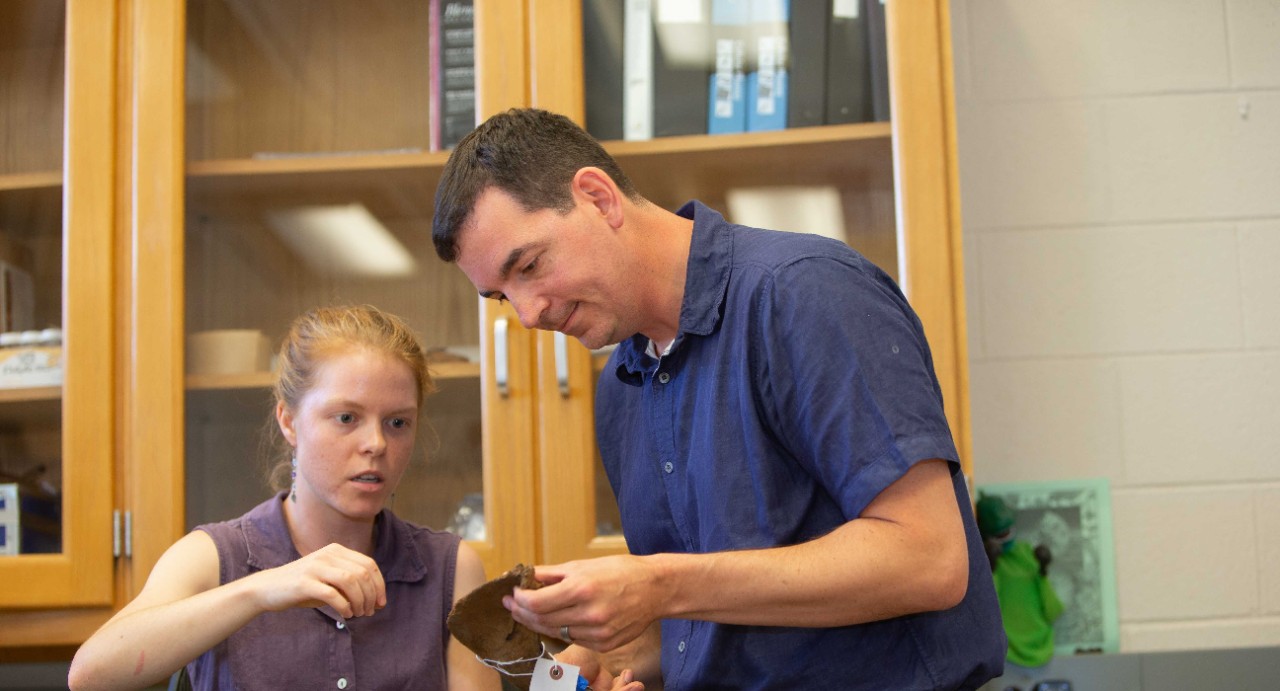
Smithsonian: UC student interprets bison 'mummy'
Smithsonian turns to UC researchers to explain significance of extinct bison find
Smithsonian Magazine turned to a University of Cincinnati paleoecologist and his student to help interpret the significance of a rare mummified steppe bison found in Alaska.
The dessicated carcass of the now extinct bison was preserved in the permafrost until it was discovered in 1951. It's on display at the Smithsonian National Museum of Natural History.
Researchers using modern technology are keenly interested in these preserved specimens, which can unlock secrets about life on Earth 28,000 years ago.

UC doctoral student Abby Kelly examines a horse jawbone in a geology lab. Photo/Andrew Higley/UC Creative + Brand
Smithsonian talked to Joshua Miller, an assistant professor of geology in UC's College of Arts and Sciences, and UC doctoral student Abby Kelly. They are using isotopic analysis and other tools to study extinct populations of animals that lived during the Pleistocene's ice ages.
Miller has studied ancient ecosystems around the world, from Yellowstone National Park in Wyoming to Amboseli National Park in Kenya.
"By studying mummies and fossils from periods prior to the Anthropocene, we can track how populations and ecosystems changed through time in the absence of outsize human impacts,” Miller told Smithsonian. “This allows us to think more critically about how we impact living populations and informs strategies for how we preserve species and ecosystems today.”
Researchers are interested in the Pleistocene in part because it was a time of dramatic changes in climate.
"Bison are relative newcomers to North America, having migrated across the Bering Land Bridge about 200,000 to 170,000 years ago," Kelly told Smithsonian.
Today, North America is home to wood bison and American bison.
Featured image at top: UC student Abby Kelly and UC assistant professor Joshua Miller study an ancient horse jawbone in a geology lab. Photo/Andrew Higley/UC Creative + Brand
Related Stories
Ohio nurses weigh in on proposed federal loan rule
December 12, 2025
Spectrum News journalist Javari Burnett spoke with UC Dean Alicia Ribar and UC nursing students Megan Romero and Nevaeh Haskins about proposed new federal student loan rules. Romero and Haskins, both seniors, were filmed in the College of Nursing’s Simulation Lab.
Bearcat Mascot, Cheer Team and scholarships help celebrate Decision Day
December 12, 2025
Cincinnati media organization provided news coverage of Decision Day activities at the University of Cincinnati on Dec. 10, 2025. Surprise announcements of the 2026 Marian Spencer Scholarship recipient occurred during the day.
UC awarded nearly $1 million to help fight infant obesity spike
December 12, 2025
University of Cincinnati researcher Cathy Stough spoke with Spectrum News1 about a nearly $1 million National Institutes of Health grant awarded to UC to help prevent infant obesity through early nutrition support and family-based interventions.
